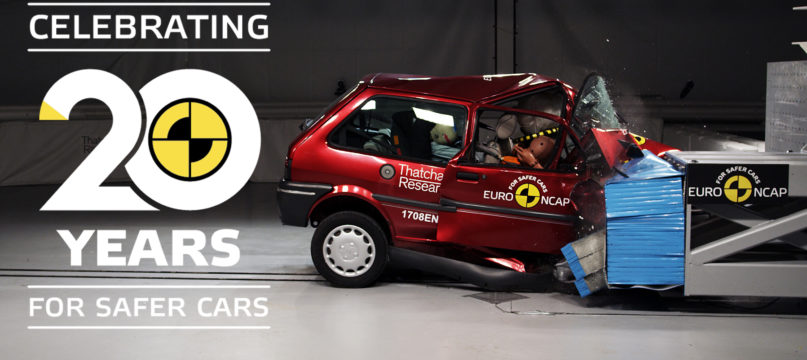
More than 78,000 lives have been saved since Euro NCAP’s crash tests were launched 20 years ago this week. Today, Euro NCAP reveals it has published over 630 safety ratings, crash-tested some 1,800 cars and collectively spent over €160 million to make cars safer. Euro NCAP continues to test the newest safety innovations including cyclist-sensing auto-brake technology.
The first tests exposed safety failings in top-selling family cars, forcing a fundamental rethink in the way vehicles were designed to prevent accidents and save lives. Now, 9 out of 10 cars sold on the European market hold a Euro NCAP rating and the motor industry actively supports the development of new requirements for the top safety ratings.
Today, the results of crash tests of two family cars built 20 years apart underline the huge advances in vehicle safety since 1997. Safety technologies that were non-existent or optional at most – such as driver and passenger airbags, side protection airbags, seat belt reminders and electronic stability control – are now standard on all cars sold in Europe.
Euro NCAP Secretary General, Michiel van Ratingen said: “Euro NCAP has given millions of consumers the knowledge and confidence to choose the safest cars possible. We want to ensure that Europe’s roads get even safer in the next 20 years, not just for car occupants but for all participants in traffic. We already test many more aspects of a car’s safety than we did when we started in 1997, and that is set to continue. Next year, we will test systems that recognise and avoid crashes with cyclists, and we’re lining up a very challenging roadmap for 2020 to 2025.”
Backed by the FIA (Federation Internationale de l’Automobile), the UK, Swedish and Dutch Governments, the first Euro NCAP crash test results were revealed on 4th February 1997. Until then, car makers only had to meet basic legislative crash test requirements for new cars, the results of which were not published. It was impossible for consumers to compare the safety of one car with another.